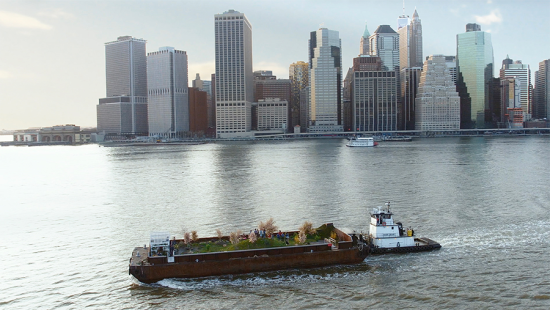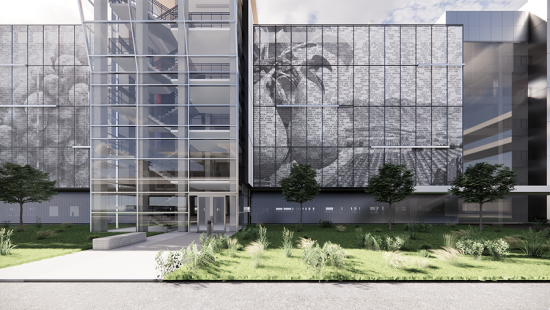Malinowska and Jasper's Halka in Haiti, Restaging at the Hirshhorn
Joanna Malinowska, art, and collaborator C.T. Jasper's film investigates "the unusual, unexpected, and sometimes bizarre ways in which people interpret their histories and construct their identities." Malinowska shares her thoughts on culture in art practice, and approaches to teaching.
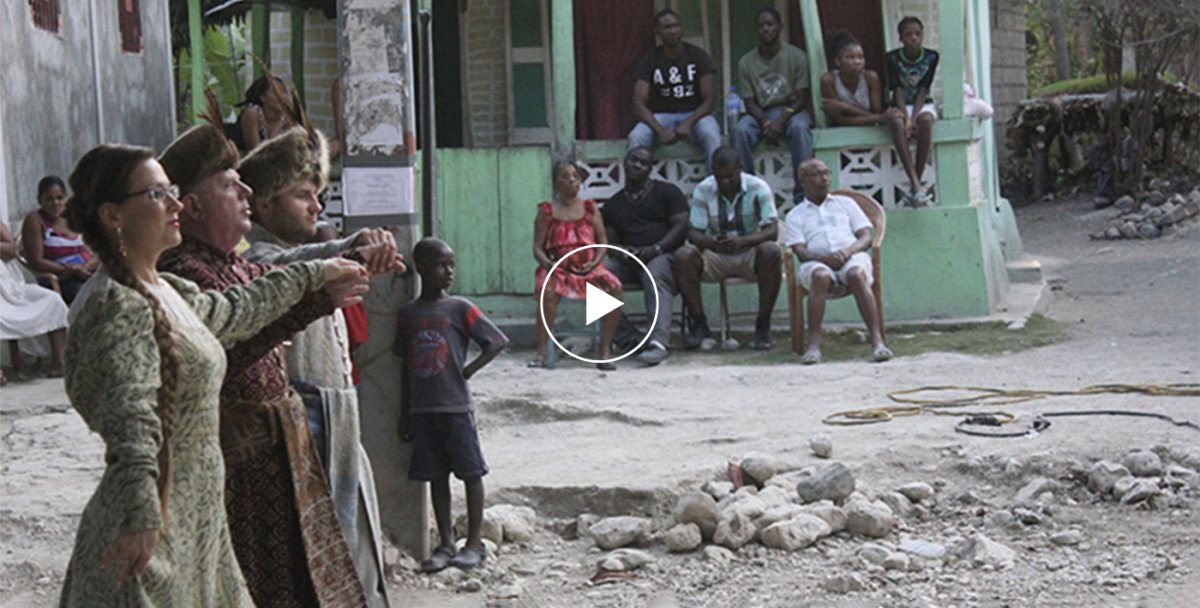 View the trailer for Halka/Haiti 18°48′05′′N 72°23′01′′W . photo / Damas Parcena
View the trailer for Halka/Haiti 18°48′05′′N 72°23′01′′W . photo / Damas Parcena
Halka/Haiti 18°48'05"N 72°23'01"W — Malinowska and Jasper's film of an outdoor staging in Cazale, Haiti of the epic Polish opera Halka — is included in a group show that is now open at the Hirshhorn Museum, Washington, DC. Originally selected for the Venice Biennale of Art Polish Pavilion in 2015, the current screening is part of In the Beginning: Media Art and History, the first virtual exhibition at the Hirshhorn. The show focuses on how video, sound, and performance can be used to probe and reimagine histories; Halka/Haiti is included in the exhibition's second of three chapters titled "Restaging," and runs November 1–30.
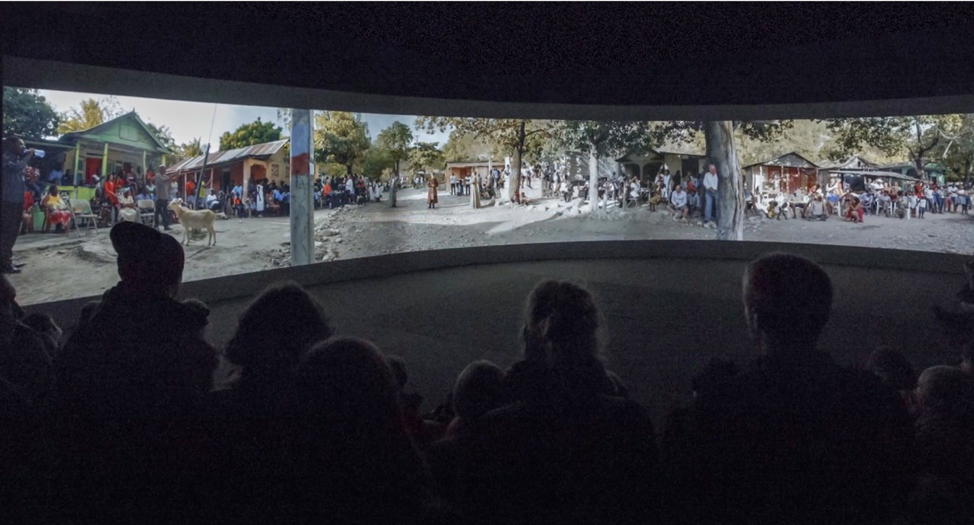 C.T. Jasper & Joanna Malinowska's Halka/Haiti 18°48′05′′N 72°23′01′′W (2015) inside the Polish Pavilion at the 56th Venice Biennale, curated by Magdalena Moskalewicz and produced by Zachęta, The National Gallery of Art in Warsaw. photo / Barbara Kaja Kaniewska
C.T. Jasper & Joanna Malinowska's Halka/Haiti 18°48′05′′N 72°23′01′′W (2015) inside the Polish Pavilion at the 56th Venice Biennale, curated by Magdalena Moskalewicz and produced by Zachęta, The National Gallery of Art in Warsaw. photo / Barbara Kaja Kaniewska
Halka/Haiti 18°48'05"N 72°23'01"W was initially produced for the Polish Pavilion at the Venice Biennale and displayed for viewers in an immersive panoramic format. Can you briefly discuss your initial ideas for the performance and film; its staging and location?
In this and many other conversations about Halka/Haiti 18°48'05"N 72°23'01"W, I mention Werner Herzog's film Fitzcarraldo as one of the conceptual "ingredients" behind the project and something that provoked us to embark on the mission of performing Halka in Haiti. To be more precise, our goal was to overthrow this Romantic-period notion of heroism that always leads to a grandiose finale of disaster—the notion that catharsis is attainable only through failure and loss. Our intention was to prove that it is possible to take an opera performance out of its traditional context and traditional housing and having it happen in the middle of a village road, without set designs, perfectly tuned instruments, and the demarcation line separating performers from the audience. In a sense, we were trying to go back to the origins of the opera as a genre, to its beginnings when opera was a communal, village experience rather than a high-style and somewhat artificial form of entertainment for the elite.
We succeeded in making the performance happen against the odds of fortune, turning it into a kind of communal feast. But I must acknowledge the incredible challenges (logistical, financial, geographical, linguistic, and so on) that we faced, as well as the enormous effort from everyone involved that made it possible. In this sense, our work on this production was very similar to Fitzcarraldo's symbolic dragging of the boat over the mountain in the rain forest.
"The context of the exhibition is not accidental given the moment we live in when the world seems like a boiling pot of unresolved cross-cultural, or ideological, tensions with the need to critically examine the past reawakened."
Why do you think Hirshhorn curator Marina Isgro found this work to be particularly well-suited for this exhibition? Did you encounter benefits or drawbacks in translating the format from the pavilion to the personal computer screen for viewers?
The online exhibition, In the Beginning: Media Art and History looks at how video, sound, and performance are used to investigate, reexamine, and reimagine history. Our project is based on not very well-known historical ties between Poland and Haiti. In 1802 and 1803 Polish soldiers were sent to Saint-Domingue by Napoleon to put down a rebellion organized by enslaved people. The Poles—who had joined Napoleon to fight for the independence of their own country—ended up uniting with local insurgents, and those who survived the revolution received honorary legal status, equal to Black people, in the newly established republic.
We staged the opera in the village of Cazale which is largely inhabited by the descendants of these soldiers, many of the Cazaleans bear creolized last names of their Polish ancestors and identify with their historical motherland and its culture to this day. This historical backdrop of the project seems to make our piece fit perfectly in the curatorial frame of the exhibition.
The context of the exhibition is not accidental given the moment we live in when the world seems like a boiling pot of unresolved cross-cultural, or ideological, tensions with the need to critically examine the past reawakened. Among several contextual layers of Halka/Haiti 18°48'05"N 72°23'01"W was our interest in how national identities are constructed, and at the same time, how unpredictable and complex these identities could be. While most of the works included in the exhibition were not meant to be viewed at home on a computer screen, if there is any silver lining in the current pandemic situation, it would be the online access to potentially impactful works of art that otherwise would be available only to museum visitors.
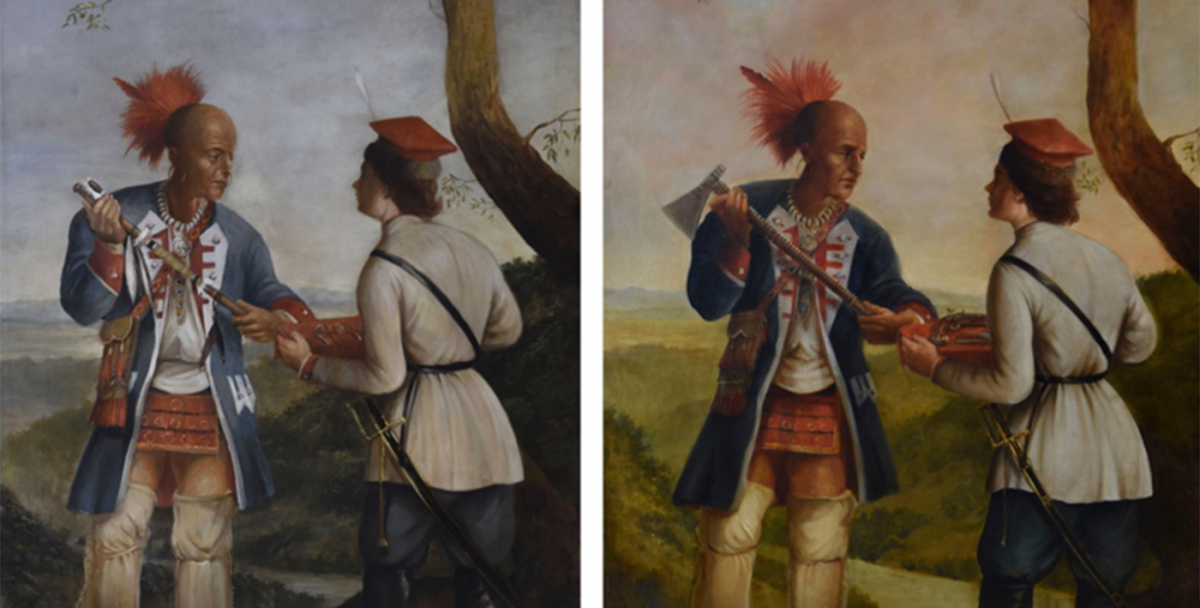 C.T. Jasper & Joanna Malinowska's The Exchange (2019) oil on canvas. photo / Mateusz Jasiński
C.T. Jasper & Joanna Malinowska's The Exchange (2019) oil on canvas. photo / Mateusz Jasiński
What are you working on currently?
Working on Halka/Haiti 18°48'05"N 72°23'01"W inspired my partner and me to continue investigating the unusual, unexpected, and sometimes bizarre ways in which people interpret their histories and construct their identities. One of the current works in progress is our documentary film with the working title If One Were Only an Indian, a title borrowed from the little-known literary miniature by Franz Kafka. The film focuses on issues of cultural appropriation and looks through a critical lens at the phenomenon of the Polish American Indian Friends Movement, an informal organization formed in the 1970s for those sharing a unique fascination with indigenous North American cultures and professing an alleged kinship between Poles and Indigenous Americans.
This alleged kinship recently led us to collaborate with a specialist in the restoration of historical paintings on a diptych of the meeting of Tadeusz Kościuszko, Polish army officer, statesman and war hero of the American Revolution, with Little Turtle (Mihšihkinaahkwa), a Sagamore chief of the Miami people and a famous military leader. In the diptych, the look-alike paintings of the two men in a genre scene point out the contradictory details in how this moment in history, one that may never have actually occurred, is remembered and mythologized.
You primarily teach sculpture at AAP. How do you do so in a way that challenges conventional notions of the medium and expands ideas about how to work spatially, temporally, and sculpturally? How do you push against cultural preconceptions and constraints in your own work and teaching?
Despite the fact that a lot of my recent work has not been very sculptural, I feel a deep affinity for sculpture. I often see sculpture and the tactile experience of working with all kinds of very physically present materials (and the laws of physics) as a form of refuge. I don't think I necessarily push against formal constraints in my practice and in my teaching, but rather from the beginning approach these processes with a belief or at least an assumption that sculpture is a truly versatile medium that could cover under its umbrella almost any type of activity. I often ask my students to work in ways that defeat the common understanding of sculpture as a free-standing, solid, three-dimensional object. I like sculptures that need to lean on something or change their shape over time.
It might be a gross oversimplification, but growing up in Poland before the collapse of the Soviet Bloc, I always felt as if our culture was impossibly homogenous, filtered by the opposing narratives of the Roman Catholic Church and the Communist Party, and this is probably the ultimate reason why, as an artist, I'm attracted to investigating alternative possibilities, the entropy of cross-cultural clashes and exchanges as well as contradictions to well-trodden paths.




